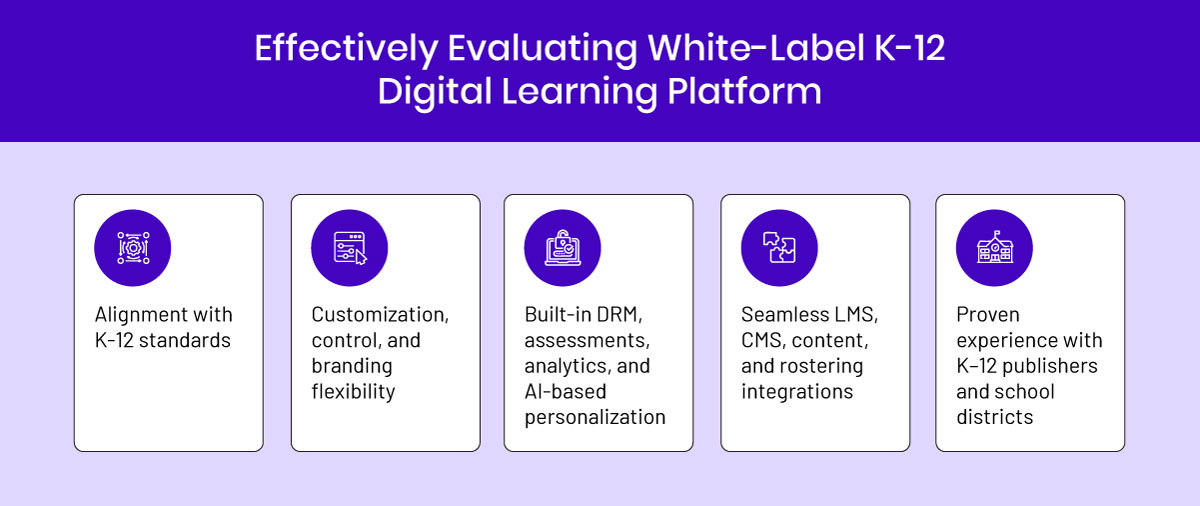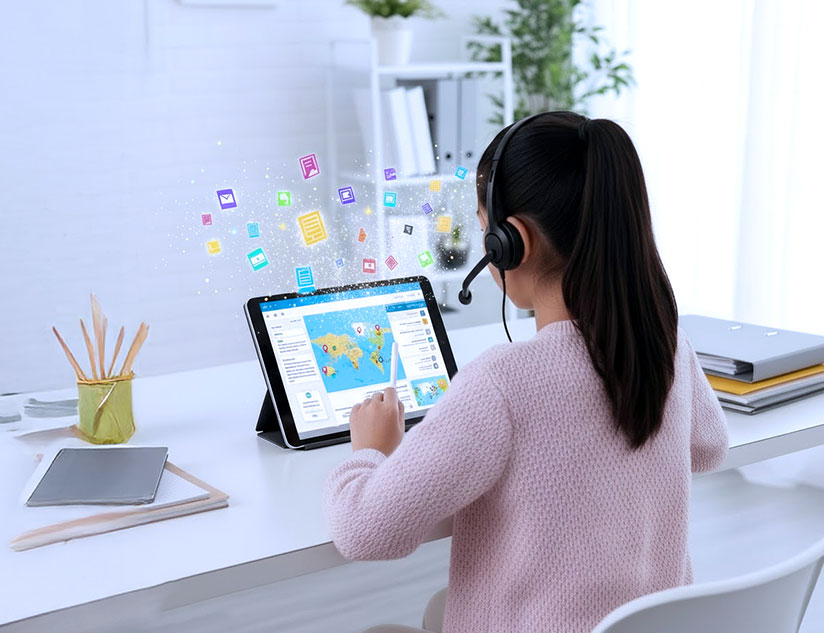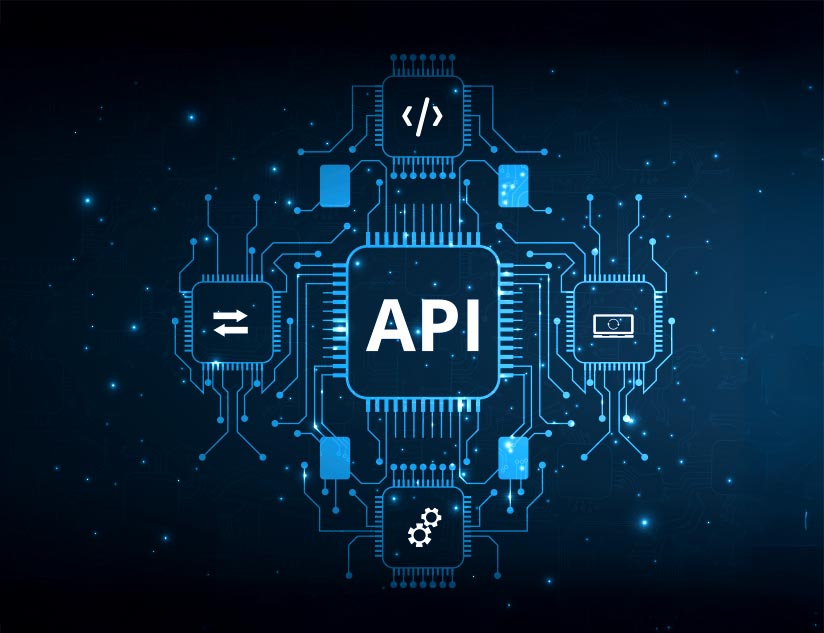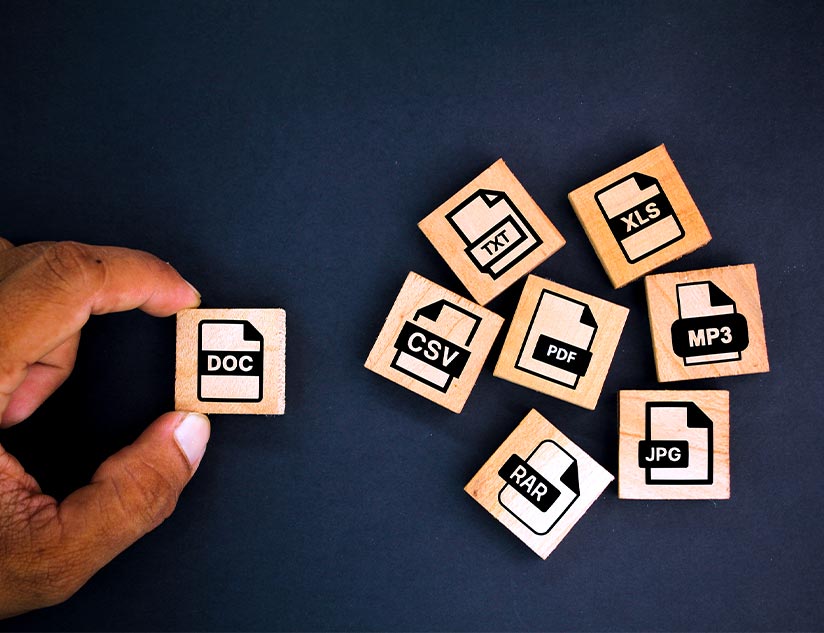The edtech industry is anticipated to be a $1.06 trillion market by 2033. Given the benefits of digital learning platforms, such as flexibility, personalization, and accessibility, it is no surprise that the shift toward digital learning is accelerating. As school districts increasingly demand seamless, scalable, compliant, and secure learning solutions, K-12 publishers face a pivotal decision: build a digital learning platform from scratch or buy a proven solution.
The Cost of Building from Scratch
Even with the most cutting-edge education technologies, K-12 publishers could be more than just reinventing the wheel. It entails:
Development Costs
A reliable MVP (minimum viable product) can take from 12 to 18 months to develop. Let us remind you, in the edtech space, this is nowhere near market-ready. Next, the development from MVP to an enterprise-grade solution involves several steps. For instance, cloud infrastructure setup, security audits, quality analysis, stress tests, and compliance validation. These push costs higher, which has no guarantee of translating into an ROI of comparable scale.
Prolonged Timelines
The time a K12 digital learning platform built from scratch takes to reach markets is one in which curriculum requirements, state mandates, or district expectations may evolve. The primary reason is a wide variety of user capabilities, each requiring a different user experience design.
Regulatory Complexity
K–12 platforms must comply with FERPA, COPPA, WCAG 2.1, and state-specific data privacy laws. Next comes curricular alignment. Mind you, that is not static, and with the evolving set of skills required, it is sure to get more complex and faster.
Maintenance Overheads
Development doesn’t end after launch. Bug fixes, feature updates, server management, and evolving tech stacks require a dedicated engineering team. These distractions keep K-12 publishers from achieving their mission: educational excellence.
Talent Gaps
Did you know that the tech talent gap could reach 3.9 million individuals by 2027? Finding and retaining developers with education technology expertise is increasingly complex and, of course, expensive, especially for K-12 publishers, with little expertise in this area. Moreover, even a great team needs months to build what experienced vendors already offer.
Why Buying Makes Business and Educational Sense
Buying a proven digital learning platform with content distribution capability is the more intelligent choice for K-12 publishers. Here’s why:
Accelerated Time to Market
Speed to market is crucial for K-12 publishers. Delays in platform deployment can result in missed short adoption windows in a given academic year. White-labeled education platforms, such as MagicBox’s award-winning solutions, enable K-12 publishers to launch digital products in weeks, not years. In a market shaped by school-year procurement cycles, this agility can be a key differentiator.
Lower Upfront Investment
First, you do not have to try and test what works. Predictable, subscription-based, scalable pricing structures eliminate the need for massive upfront investment. K-12 publishers have a clear view of operational costs and set profitable pricing effortlessly.
Compliance and Integrations are Taken Care Of
Trusted education technology providers for K-12 publishers deliver market-ready digital learning platforms. These are fully compliant and integrated with major LMSs like Google Classroom, Canvas, and Schoology, right from day one. This significantly reduces risk and accelerates adoption in schools.
Proven Scalability and Performance
MagicBox is an all-in-One Learning platform, tested at scale. It delivers high uptime, seamless access during peak usage, and enterprise-grade support. Replicating these capabilities in-house can be cost- and effort-intensive.
Stay Focused on What You Do Best: Produce Exceptional Learning Content
Let your teams focus on creating engaging, standards-aligned learning materials, not software infrastructure. Buying a platform allows publishers to remain pedagogically driven and not bogged down by programming intricacies. An integrated K-12 digital content platform can further enhance your workflows, enabling seamless course authoring and distribution.
Buy to Scale. Build to Delay.
In the rapidly evolving educational space, every year counts as much for K-12 publishers as it does for students. Building your digital learning platform may offer greater perceived control. However, it also introduces delays, distractions, and risks. Buying a ready-to-launch, purpose-built, white-labeled education platform allows you to respond to market needs faster, scale smarter, and focus on making a greater educational impact.
Whether you’re launching a new curriculum, distributing digital content to school districts, or enhancing student engagement, MagicBox’s award-winning white label education platform with integrated content authoring and distribution tools ensures you stay ahead of the curve. That is why several K-12 educational publishers worldwide trust MagicBox to enhance their educational impact and get better ROI. Speak to MagicBox™ experts to adopt a strategic route to scaling smarter and faster.
















